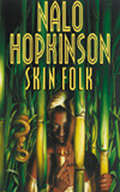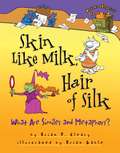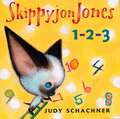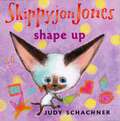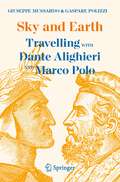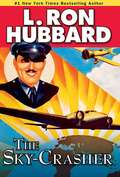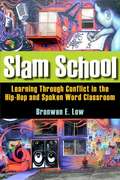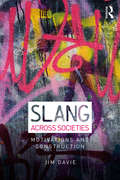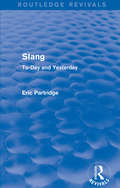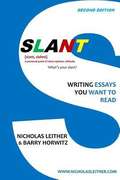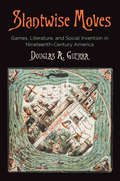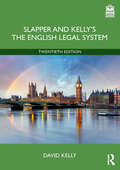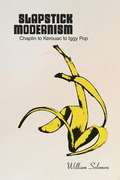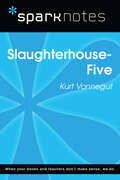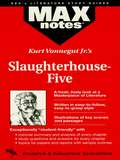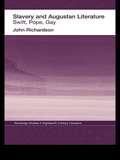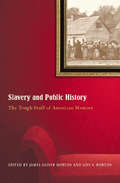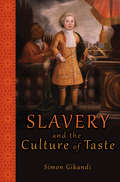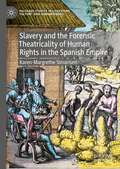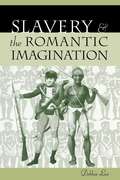- Table View
- List View
Skin Folk
by Nalo HopkinsonThroughout the Caribbean there are stories about people who aren't what they seem. Skin gives these folk their human shape. When the skin comes off, their true selves emerge. And whatever the burden their skin bears, once they remove it, skin folk can fly...<P>Nalo Hopkinson has gained universal acclaim as one of the most impressively original authors to emerge in years. Her debut novel, "Brown Girl in the Ring," won the "Locus" Award for Best First Novel, became a finalist for the Philip K. Dick Award, and garnered Hopkinson the John W. Campbell Award for Best New Writer. Her second novel, "Midnight Robber," was a "New York Times" Notable Book of the Year and a finalist for both the Nebula and Hugo Awards.<P>Now she presents "Skin Folk," a richly vibrant collection of short fiction that ranges from Trinidad to Toronto, from fantastic folklore to frightening futures, from houses of deadly haunts to realms of dark sexuality. <P>Powerful and sensual, disturbing and triumphant, these tales explore the surface of modern existence... and delve under the skin of eternal legends.
Skin like Milk, Hair of Silk: What Are Similes and Metaphors?
by Brian P. ClearyWhat Are Similes and Metaphors? Are you as clever as a fox? Or perhaps you're as sharp as any spike? If so, this book will be a piece of cake! Clever rhymes from Brian P. Cleary and humorous illustrations from Brian Gable present similes and metaphors. When it comes to grammar, this team is not as slow as thick molasses. Oh no, they're as bright as polished pennies! Each simile and metaphor is printed in color for easy identification in this gem of a book. Read it aloud and share in the delight of the sense--and nonsense--of words. Ages 7-11 (scanner's note, the words in color have been made words in bold)
Skippyjon Jones 1-2-3 (Skippyjon Jones)
by Judy SchachnerSkippyjon Jones, the Siamese kitty boy who thinks he is a Chihuahua, can count! He is one naughty kitty, with two big ears, and three little sisters. Little ones will love to count along with him as he bounces his way from one to ten.
Skippyjon Jones Shape Up (Skippyjon Jones)
by Judy SchachnerSkippyjon has an overactive imagination. And he is pretty active himself. Here he shapes up with shapes: he runs in a circle, tap-dances on a square, orbits an oval. And then the great sword fighter shows his muscles.
Sky Birds Dare!
by L. Ron HubbardStep back in time with this riveting tale of daredevils, pilots and brutal madmen. Ace glider pilot Breeze Callaghan is trying to demonstrate to the Navy the value of gliders and gliding techniques in war. There are two ways Breeze believes they can be used to aid the war effort: they'll keep a plane aloft when engines cut out, and gliders will be able to enter enemy airspace silently--a perfect way to spy undetected. Callahan's ruthless competitor, Badger O'Dowell, has other ideas. Badger's determined to get the Navy to buy his training ships instead. When testing gets underway to prove the mettle of their designs, sabotage and betrayal threaten to destroy not only Callahan's dream of glider flight in war, but also his life. "Highly recommended for aviation action/adventure pulp fiction fans." --Midwest Book Review
Sky and Earth: Travelling with Dante Alighieri and Marco Polo
by Giuseppe Mussardo Gaspare Polizzi700 years after Dante Alighieri's death, this book intertwines the voice of the great poet with that of an exceptional contemporary, Marco Polo, who was equally curious about the geography of both earthly and celestial worlds. If Polo was the “ordinary genius” of the XIII century, the designation of “sorcerer genius” must go to Alighieri, the man with encyclopedic wisdom, at ease with his era’s philosophy, theology, and science. The sorcerer genius—well versed in this world—must create their own, which he did with The Divine Comedy. On the other hand, The Travels of Marco Polo, the greatest classic in travel literature, offers wonder and provides delight. This book combines the unforgettable characters of both books, the darkness of the infernal landscapes with the immensity of the Asian deserts, the richness of the Mongol empire with the glamor of medieval philosophy, the aspirations and dreams of two great explorers with knowledge of the science of their time, as well as the ever-eternal cosmology. This is an accessible and entertaining book for high school students, scholars of scientific history and the history of ideas, and curious readers who want to know more about Dante and Marco Polo and their unquenchable thirst for knowledge.This book is a translation of an original German edition. The translation was done with the help of artificial intelligence (machine translation by the service DeepL.com). A subsequent human revision was done primarily in terms of content, so that the book will read stylistically differently from a conventional translation.
Sky-Crasher, The
by L. Ron HubbardRiveting historical account of daredevils, pilots and brutal madmen. Caution Jones is a second-generation ace pilot desperately trying to bury his past and the memories of his father-- a daredevil barnstormer who perished trying to wow crowds and killed Caution's mother from the shock.Now Caution has worked his way up the ladder as an ultra-efficient, ultra-conservative general manager of a small airline struggling to make ends meet. When the US Post Office puts its international delivery service up for grabs to the first airline that can successfully circumnavigate the globe and outperform every other airline, Caution's boss presses him into competing for the contract.Against his better judgment, Caution throws his name to the wind, risking the hazards of the round-world air race. Joined by a fiery blonde stunt flyer as his female co-pilot, he begins the journey only to discover that a rival airline is trying to sabotage their every move. "Primo pulp fiction." --Booklist
Slam School: Learning Through Conflict in the Hip-hop and Spoken Word Classroom
by Bronwen E. LowIn this study, Low (education, McGill U. , Canada) relates how a white teacher implemented the study of hip-hop and spoken word culture into urban high school language arts classes, which she co-taught and helped develop the curriculum for. She analyzes the dynamics of teaching and learning in these classes to argue that the reasons that teachers and administrators resist introducing hip-hop into curriculum--its complex issues of gender, violence, sexuality, materialism, race, and language--are what make it important pedagogically. She focuses on African American youth in interaction with white youth, teachers, and administrators, describing the student's exploration of poetry performance and writing and their experiences with the language of the hip-hop culture. Annotation ©2011 Book News, Inc. , Portland, OR (booknews. com)
Slang across Societies: Motivations and Construction
by Jim DavieSlang Across Societies is an introductory reference work and textbook which aims to acquaint readers with key themes in the study of youth, criminal and colloquial language practices. Focusing on key questions such as speaker identity and motivations, perceptions of use and users, language variation, and attendant linguistic manipulations, the book identifies and discusses more than 20 in-group and colloquial varieties from no fewer than 16 different societies worldwide. Suitable for advanced undergraduate and postgraduate students working in areas of slang, lexicology, lexicography, sociolinguistics and youth studies, Slang Across Societies brings together extensive research on youth, criminal and colloquial language from different parts of the world.
Slang and Sociability
by Connie EbleSlang is often seen as a lesser form of language, one that is simply not as meaningful or important as its 'regular' counterpart. Connie Eble refutes this notion as she reveals the sources, poetry, symbolism, and subtlety of informal slang expressions. In Slang and Sociability, Eble explores the words and phrases that American college students use casually among themselves. Based on more than 10,000 examples submitted by Eble's students at the University of North Carolina at Chapel Hill over the last twenty years, the book shows that slang is dynamic vocabulary that cannot be dismissed as deviant or marginal. Like more formal words and phrases, slang is created, modified, and transmitted by its users to serve their own purposes. In the case of college students, these purposes include cementing group identity and opposing authority. The book includes a glossary of the more than 1,000 slang words and phrases discussed in the text, as well as a list of the 40 most enduring terms since 1972. Examples from the glossary: group gropes -- encounter groups squirrel kisser -- environmentalist Goth -- student who dresses in black and listens to avant-garde music bad bongos -- situation in which things do not go well triangle -- person who is stupid or not up on the latest za -- pizza smoke -- to perform well dead soldier -- empty beer container toast -- in big trouble, the victim of misfortune parental units -- parents
Slang from Shakespeare: Together with Literary Expressions
by Anderson M. Baten“It was Greek to me.” This handy reference showcases William Shakespeare’s genius, compiling over 1,500 of his most famous epigrams, invectives, literary expressions, and philosophical poems that have found their way into our everyday vernacular.
Slang: To-Day and Yesterday (Routledge Revivals: The Selected Works of Eric Partridge)
by Eric PartridgeFirst published in 1933, this book explores both contemporary and historical slang, focusing on the characteristics and quirks of the English and American languages. As well as looking at commonly used slang, there are sections that give the reader insight into more unusual areas such as Cockney slang, slang in journalism and slang in commerce, as well as slang used by sailors, the law and the church. The book will be of interest to scholars and the general readers who take an interest in language.
Slant: Writing Essays You Want to Read (Second Edition)
by Nicholas Leither Barry HorwitzThis succinct college writing manual demonstrates a step-by-step process for creating phenomenal and engaging essays, encouraging every college writer to express and hone his or her personal voice and slant in every part of the writing process. It takes students beyond writing essays they have to write, challenging them to write essays they want to read.
Slantwise Moves: Games, Literature, and Social Invention in Nineteenth-Century America (Material Texts)
by Douglas A. GuerraIn 1860, Milton Bradley invented The Checkered Game of Life. Having journeyed from Springfield, Massachusetts, to New York City to determine interest in this combination of bright red ink, brass dials, and character-driven decision-making, Bradley exhausted his entire supply of merchandise just two days after his arrival in the city; within a few months, he had sold forty thousand copies. That same year, Walt Whitman left Brooklyn to oversee the printing of the third edition of his Leaves of Grass in Massachusetts. In Slantwise Moves, Douglas A. Guerra sees more than mere coincidence in the contemporary popularity of these superficially different cultural productions. Instead, he argues, both the book and the game were materially resonant sites of social experimentation—places where modes of collectivity and selfhood could be enacted and performed.Then as now, Guerra observes, "game" was a malleable category, mediating play in various and inventive ways: through the material forms of pasteboard, paper, and india rubber; via settings like the parlor, lawn, or public hall; and by mutually agreed-upon measurements of success, ranging from point accumulation to the creation of humorous narratives. Recovering the lives of important game designers, anthologists, and codifiers—including Anne Abbot, William Simonds, Michael Phelan, and the aforementioned Bradley—Guerra brings his study of commercially produced games into dialogue with a reconsideration of iconic literary works. Through contrapuntal close readings of texts and gameplay, he finds multiple possibilities for self-fashioning reflected in Bradley's Life and Whitman's "Song of Myself," as well as utopian social spaces on billiard tables and the pages of Nathaniel Hawthorne's The Blithedale Romance alike.Highlighting meaningful overlap in the production and reception of books and games, Slantwise Moves identifies what the two have in common as material texts and as critical models of the mundane pleasures and intimacies that defined agency and social belonging in nineteenth-century America.
Slapper and Kelly's The English Legal System
by David KellySlapper and Kelly’s The English Legal System explains and critically assesses what law is, how it is made and applied, and how it affects the general public.This latest edition has not only been restructured and updated, but extensively refocused, to provide a reliable analysis of the contemporary legal system in the sociopolitical uncertainty of a post-Brexit, post-Covid UK.It retains the key learning features of: useful chapter summaries which act as a good checkpoint for students; ‘food for thought’ questions at the end of each chapter to prompt critical thinking and reflection; sources for further reading and suggested websites at the end of each chapter to point students towards further learning pathways; and a fully updated online resource for students and instructors. Trusted by generations of academics and students, this authoritative textbook is a permanent fixture in this ever-evolving subject.
Slapstick Modernism: Chaplin to Kerouac to Iggy Pop
by William SolomonSlapstick comedy landed like a pie in the face of twentieth-century culture. Pratfalls and nyuk-nyuks percolated alongside literary modernism throughout the 1920s and 1930s before slapstick found explosive expression in postwar literature, experimental film, and popular music. William Solomon charts the origins and evolution of what he calls slapstick modernism --a merging of artistic experimentation with the socially disruptive lunacy made by the likes of Charlie Chaplin. Romping through texts, films, and theory, Solomon embarks on a harum-scarum intellectual odyssey from high modernism to the late modernism of the Beats and Burroughs before a head-on crash into the raw power of punk rock. Throughout, he shows the links between the experimental writers and silent screen performers of the early century, and explores the potent cultural undertaking that drew inspiration from anarchical comedy after World War Two.
Slaughterhouse 5 (SparkNotes Literature Guide Series)
by SparkNotesSlaughterhouse 5 (SparkNotes Literature Guide) by Kurt Vonnegut, Jr. Making the reading experience fun! Created by Harvard students for students everywhere, SparkNotes is a new breed of study guide: smarter, better, faster. Geared to what today's students need to know, SparkNotes provides: *Chapter-by-chapter analysis *Explanations of key themes, motifs, and symbols *A review quiz and essay topicsLively and accessible, these guides are perfect for late-night studying and writing papers
Slaughterhouse-Five (Maxnotes Literature Guides)
by Tonnvane WiswellREA's MAXnotes for Kurt Vonnegut Jr.'s Slaughterhouse-Five MAXnotes offer a fresh look at masterpieces of literature, presented in a lively and interesting fashion. Written by literary experts who currently teach the subject, MAXnotes will enhance your understanding and enjoyment of the work. MAXnotes are designed to stimulate independent thought about the literary work by raising various issues and thought-provoking ideas and questions. MAXnotes cover the essentials of what one should know about each work, including an overall summary, character lists, an explanation and discussion of the plot, the work's historical context, illustrations to convey the mood of the work, and a biography of the author. Each section of the work is individually summarized and analyzed, and has study questions and answers.
Slavery and Augustan Literature: Swift, Pope and Gay (Routledge Studies in Eighteenth-Century Literature)
by Dr J RichardsonSlavery and Augustan Literature investigates slavery in the work of Jonathan Swift, Alexander Pope and John Gay. These three writers were connected with a Tory ministry, which attempted to increase substantially the English share of the international slave trade. They all wrote in support of the treaty that was meant to effect that increase. The book begins with contemporary ideas about slavery, with the Tory ministry years and with texts written during those years. These texts tend to obscure the importance of the slave trade to Tory planning. In its second half, the book analyses the attitudes towards slavery in Pope's Horatian poems, An Essay on Man, Polly, A Modest Proposal and Gulliver's Travels. John Richardson shows how, despite differences, Swift, Pope and Gay adopt a mixed position of admiration for freedom alongside implicit support for slavery.
Slavery and Public History: The Tough Stuff of American Memory
by Ira Berlin Gary B. Nash David W. Blight&“A fascinating collection of essays&” by eminent historians exploring how we teach, remember, and confront the history and legacy of American slavery (Booklist Online). In recent years, the culture wars have called into question the way America&’s history of slavery is depicted in books, films, television programs, historical sites, and museums. In the first attempt to examine the historiography of slavery, this unique collection of essays looks at recent controversies that have played out in the public arena, with contributions by such noted historians as Ira Berlin, David W. Blight, and Gary B. Nash. From the cancellation of the Library of Congress&’s &“Back of the Big House&” slavery exhibit at the request of the institution&’s African American employees, who found the visual images of slavery too distressing, to the public reaction to DNA findings confirming Thomas Jefferson&’s relationship with his slave Sally Hemings, Slavery and Public History takes on contemporary reactions to the fundamental contradiction of American history—the existence of slavery in a country dedicated to freedom—and offers a bracing analysis of how Americans choose to remember the past, and how those choices influence our politics and culture. &“Americans seem perpetually surprised by slavery—its extent (North as well as South), its span (over half of our four centuries of Anglo settlement), and its continuing influence. The wide-ranging yet connected essays in [this book] will help us all to remember and understand.&” —James W. Loewen, author of Sundown Towns
Slavery and the Culture of Taste
by Simon GikandiIt would be easy to assume that, in the eighteenth century, slavery and the culture of taste--the world of politeness, manners, and aesthetics--existed as separate and unequal domains, unrelated in the spheres of social life. But to the contrary, Slavery and the Culture of Taste demonstrates that these two areas of modernity were surprisingly entwined. Ranging across Britain, the antebellum South, and the West Indies, and examining vast archives, including portraits, period paintings, personal narratives, and diaries, Simon Gikandi illustrates how the violence and ugliness of enslavement actually shaped theories of taste, notions of beauty, and practices of high culture, and how slavery's impurity informed and haunted the rarified customs of the time. Gikandi focuses on the ways that the enslavement of Africans and the profits derived from this exploitation enabled the moment of taste in European--mainly British--life, leading to a transformation of bourgeois ideas regarding freedom and selfhood. He explores how these connections played out in the immense fortunes made in the West Indies sugar colonies, supporting the lavish lives of English barons and altering the ideals that defined middle-class subjects. Discussing how the ownership of slaves turned the American planter class into a new aristocracy, Gikandi engages with the slaves' own response to the strange interplay of modern notions of freedom and the realities of bondage, and he emphasizes the aesthetic and cultural processes developed by slaves to create spaces of freedom outside the regimen of enforced labor and truncated leisure. Through a close look at the eighteenth century's many remarkable documents and artworks, Slavery and the Culture of Taste sets forth the tensions and contradictions entangling a brutal practice and the distinctions of civility.
Slavery and the Forensic Theatricality of Human Rights in the Spanish Empire (Palgrave Studies in Literature, Culture and Human Rights)
by Karen-Margrethe SimonsenThis book is a study of the forensic theatricality of human rights claims in literary texts about slavery in the sixteenth and the nineteenth century in the Spanish Empire. The book centers on the question: how do literary texts use theatrical, multisensorial strategies to denunciate the violence against enslaved people and make a claim for their rights? The Spanish context is particularly interesting because of its early tradition of human rights thinking in the Salamanca School (especially Bartolomé de Las Casas), developed in relation to slavery and colonialism. Taking its point of departure in forensic aesthetics, the book analyzes five forms of non-narrative theatricality: allegorical, carnivalesque, tragicomic, melodramatic and tragic.
Slavery and the Romantic Imagination
by Debbie LeeSelected by Choice magazine as an Outstanding Academic TitleThe Romantic movement had profound social implications for nineteenth-century British culture. Among the most significant, Debbie Lee contends, was the change it wrought to insular Britons' ability to distance themselves from the brutalities of chattel slavery. In the broadest sense, she asks what the relationship is between the artist and the most hideous crimes of his or her era. In dealing with the Romantic period, this question becomes more specific: what is the relationship between the nation's greatest writers and the epic violence of slavery? In answer, Slavery and the Romantic Imagination provides a fully historicized and theorized account of the intimate relationship between slavery, African exploration, "the Romantic imagination," and the literary works produced by this conjunction.Though the topics of race, slavery, exploration, and empire have come to shape literary criticism and cultural studies over the past two decades, slavery has, surprisingly, not been widely examined in the most iconic literary texts of nineteenth-century Britain, even though emancipation efforts coincide almost exactly with the Romantic movement. This study opens up new perspectives on Blake, Wordsworth, Coleridge, Percy Bysshe Shelley, Mary Shelley, Keats, and Mary Prince by setting their works in the context of political writings, antislavery literature, medicinal tracts, travel writings, cartography, ethnographic treatises, parliamentary records, philosophical papers, and iconography.
